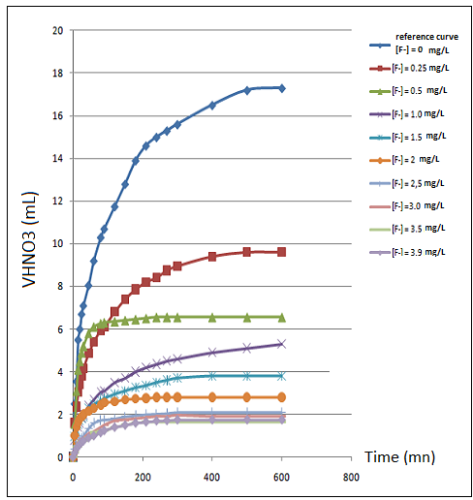
In vitro inhibitory effect of drinking water from south Algeria on the dissolution of dental hydroxyapatite
Abstract
The Inhibitory effect of waters is between 54.28 and 83.1%, VC <5%. In addition, a low concentration of fluorine [F-] = 0.25 mg / L reduced the solubility (S) of hydroxyapatite by a factor of 2. Thus, the studied Sahara waters inhibit ‘in vitro’ the dissolution of hydroxyapatite Ca5 (PO4)3OH.
Full Text:
PDFReferences
- H.T. Dean, J. Amer. Dent. Assoc., 1934, 1426.
- W. Sohn, A.I. Ismail, L.S. Taichman, Pediatre Dent., 2007, 23-29.
- S. Kato, H. Nakagaki, Y. Toyama, Gerodontology, 1997, 14, 1.
- K. A. Singh, A.J. Spencer, J.M. Armfield, J. Public Health Dent., 2003, 63, 11.
- H.B. Pan, B.W. Darvell, archive s of oral biology, 2007, 5 2, 861 – 868.
- P. Tschoppe, H.M. Lueckel, archive s of oral biology, 2011, 5 6, 775 – 784.
- J. D. Featherstone, J. Am. Dent. Assoc., 2000, 131, 887.
- E. Emmanuel, P. N. Fanfan, R. Louis , G.A. Michel, Journal of French Studies and Research / Health, 2002, 12, 241.
- T. Karak, R.M. Bhagat, Food Research International, 2010, 43, 2234-2252.
- J. Desfontaine, Rev. Orthop. Dento. Faciale, 2002, 36, 335
- Q. Xianga, M. Zhoua, M. Wua, X. Zhoub, L. Linb, J. Huangb, Y. Liangc, Journal of Nanjing Medical University,2009, 23(1), 33-39.
- National Program for Oral Health in Schools: the interministerial circular of 27 March 2006.
- World Health Organization, Guidelines for Drinking-Water Quality Recommendations, 2004, 1, Third Edition, Geneva, 494.
- T. M. Marthaler, Oral Health Prev. Dent., 2003, 1,129.
- B. Allolio, R. Lehmann, Experimental & Clinical Endocrinology & Diabetes, 1999, 107, 12.
- J. A. Weintraub, F. Ramos-Gomez, B. Jue, S. Shain, C. I. Hoover, J.D. Featherstone, S.A. Gansky, J. Dent. Res., 2006, 85, 172.
- C.B. Dissananyake, Inter.J. environnemental studies, 1991, 38, 137.
- S.M. Levy, J. Can. Dent. Assoc., 2003, 69, 286.
- I.F. Angelillo, I. Torre, C.G. Nobile, Caries Research. 1999, 33,114.
- World Health Organization, Guidelines for Drinking-Water Quality Recommendations, 2006, Geneva.
- J .Rodier, The analysis of water: natural water, waste water, sea water; 8e ed. by Dunod, Paris, 1996, pp. 983-98.
- D. Ferry, M. Machtinger, D. Bauer, Analysis, 1984, 12, 90
- M. Jiménez-Reyes, M. Solache-RÃos, Journal of Hazardous Materials, 2010, 180, 297–302
DOI: http://dx.doi.org/10.13171/mjc.1.4.2012.27.01.00
Refbacks
- There are currently no refbacks.
Copyright (c) 2015 Mediterranean Journal of Chemistry
